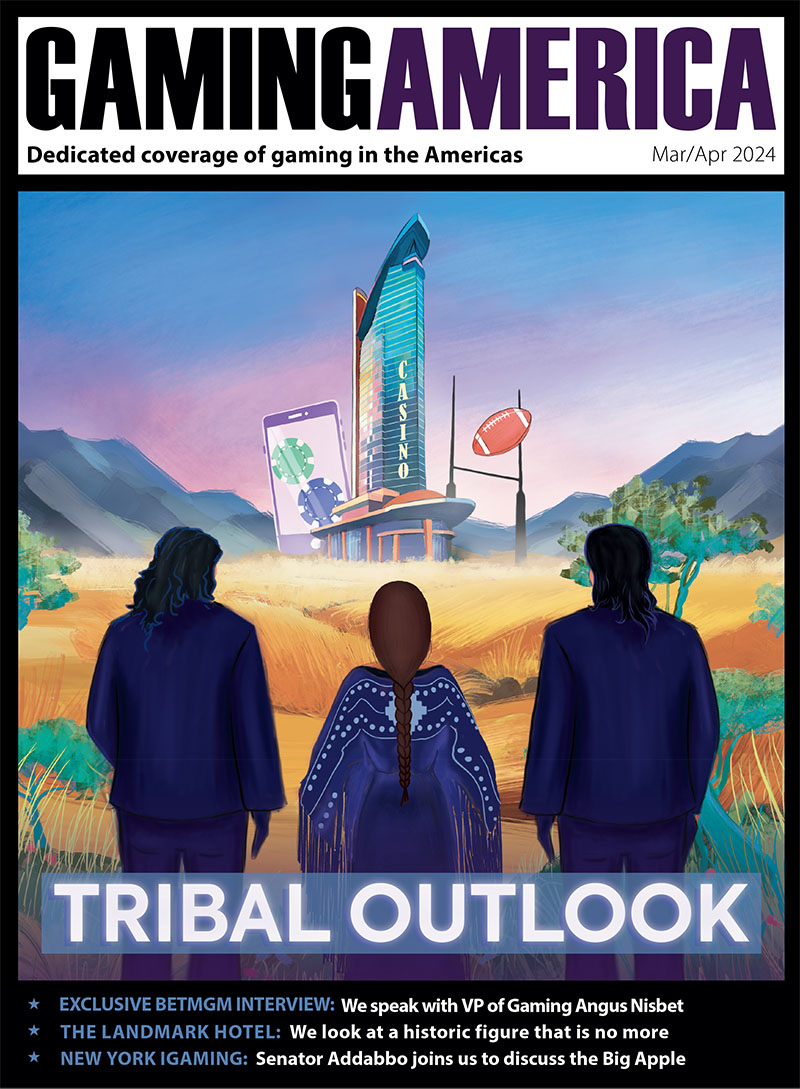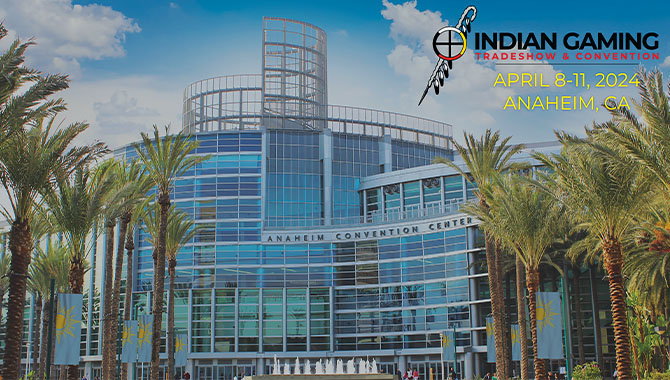
In 1905, to build a casino in Downtown Las Vegas that would cultivate a 118-year legacy, all you needed was a $1,750 land purchase, electric lighting and the promise of $1 room and board. Gambling and alcohol were available for additional costs. This is what began the storied history of the Golden Gate Casino on Fremont Street.
To build a property that truly makes a name for itself today, the project price skyrockets to over 500,000 times that of antique auction value and the cheapest rooms will still cost 30 times that original rate. In the past 100 years of casinos – whether in Las Vegas, Atlantic City, other US regions or abroad – it’s become apparent that a property must offer much more than a few poker tables and electric lighting. But what will the casinos of the future use to assert their dominance over the vast modern entertainment landscape?
Gaming America spoke to casino mogul Derek Stevens, landscape designer Julie-Brinkerhoff Jacobs, and architects George Bergman and John Ruiz about what the successful casino resorts of the future will look like: because several may already be in development right now. Some things never change, though, as no matter how much is included in a casino resort guest’s stay, gambling and alcohol will still be available at their own additional costs.
BEYOND ANYTHING LAS VEGAS EVER HAD
The oldest remaining casino on the Las Vegas Strip opened in 1946 as Flamingo Hotel & Casino and has gone through several ‘fabulous’ name changes, ownerships and renovations, with its remaining buildings all dating from 1967 and later. The Flamingo cost $6m to build and open, which would be over $270m today. The most recent hotels to be built on the famed Strip are the $4.3bn Resorts World Las Vegas, opened in 2021 and the $3.7bn Fontainebleau Las Vegas, opening in December this year. Along with acres of land, thousands of guestrooms, varied dining options, at least one swimming pool and a dedicated entertainment venue, that a casino project truly needs billions of dollars to get off the ground.
Stevens noted that for casinos being designed today, the opening of the property may not be set until 2027 at the earliest. “Depending on the size and scope, you’re probably going to have a good 12 months of design and development. Then you’re going to have a three-year build,” he told Gaming America. From Stevens’ perspective, as the winner of the North American Property of the Year for three years running at the Global Gaming Awards Las Vegas, the most important thing to do when designing a new casino is to identify its target audience. “Make a decision on who your customer is. You could be wrong, you could maybe change it down the road, but go after that customer.” Stevens has certainly attracted sports fans with Circa’s Stadium Swim pool, but has also ultimately chosen to cater specifically to a certain demographic – and Circa is the first hotel-casino in the city to serve only adult guests. He added, “When you make that decision, remember it may be controversial, it may be unpopular, but you’ve got to go after a group or a sector.”
In 1989, The Mirage opened on the Las Vegas Strip, costing $630m and started a trend that would continue down the iconic road full of today’s megaresorts. Julie Brinkerhoff-Jacobs, President and CFO of Lifescapes International, along with her father Don Brinkerhoff, were hired by Steve Wynn to “create an oasis in the middle of the desert.” Lifescapes brought something brand new to the Las Vegas Strip – gardens. “We had a conservatory garden on the inside,” Brinkerhoff-Jacobs said of The Mirage. “It was beyond anything that Las Vegas ever, ever had.” For Lifescapes, The Mirage would be the start of what made the company all it is today. Brinkerhoff-Jacobs added, “We basically got our ticket punched by bringing gardens, great architecture – and a volcano – to Las Vegas.” The Mirage influenced every other property on The Strip, not just according to its landscape designers, but to all of the other casino owners who eventually sought out Lifescapes to create dramatic entrances, exits, gardens and pools at resorts throughout the city. Lifescapes went on to add greenery and glamour to iconic casino resort destinations such as: Wynn Las Vegas, The Bellagio, Palms Casino Resort, Encore Las Vegas and Encore Boston Harbor, Four Seasons Macau, The Venetian in both Las Vegas and Macau, Red Rock Resort, Golden Nugget Lake Charles and more.
Once The Mirage was open, however, it took three years before another major casino would follow Steve Wynn’s lead and take a chance on trying to create another oasis in the middle of a gambling desert. Brinkerhoff-Jacobs said the other operators “were all waiting on him to fall.” After The Mirage began to take off, Wynn told Brinkerhoff-Jacobs, “You know, I had to make at least a million dollars a day in order to justify the cost of the property – and I was making $2m a day.” From that point, Brinkerhoff-Jacobs said the “floodgates opened” for Lifescapes and the company became responsible for many recognizable and inspiring landscaping and garden designs around the world. Brinkerhoff-Jacobs said, “Making sure that these properties were unique enough that they didn’t all look the same was critical to the success of the other individual casinos.” But within each casino resort, the most potential lies in monetizing the space. She added, “I think the most important contributions we have made in the world of gaming have to do, not only with the landscape design, but with figuring out a way to maximize the value it will have to guests from an experiential point of view, and also for [an operator’s] pocketbook.”
PROVIDING A “WOW EXPERIENCE”
Experiences that have been monetizing gardens, pools and other non-gaming spaces range from rentable cabana space, to VIP sportsbook lounges, to bars, fine dining and other retail opportunities. George Bergman, licensed architect with over 25 years in the gaming and hospitality industry, and EVP at Bergman Walls & Associates (BWA), has also made his mark on Las Vegas with projects like The Linq, Paris and Caesars Palace on his resume, as well as other properties throughout the US. Bergman agrees that casino design is not simply about the look and feel of the gaming floor. He told Gaming America, “Gaming floors are energized by the spaces and uses that surround the casino floor,” adding, “Regardless of market size, casinos in most jurisdictions face some sort of competition.” The major factors Bergman sees as differentiators between casinos are a property’s: ambiance; food & beverage offerings; entertainment; and player loyalty programs. As far as ambience goes, we know that Brinkerhoff-Jacobs and Stevens would both be inclined to agree. Why just have one garden when you could rotate a seasonal, whimsical conservatory display at the Bellagio five times a year? Why just have a pool when you can have a veritable aquatic amphitheater with a 135-foot-wide screen and swim-up bars?
John Ruiz, Principal and Managing Member of R2Architects, has also spent over 25 years in architectural and interior design. R2 has been responsible for casino, racetrack and sportsbook designs on the other side of the country, such as The Borgata, Caesars Atlantic City, Bally’s Atlantic City, Mohegan Sun and Churchill Downs Racetrack. According to Ruiz, the designs of the future will provide a “wow experience.” He said, “Guests seek aspirational places that blow them away! They demand an ‘end to end’ experience that includes excitement, great food, people meeting and watching, great energy and vibes. You have to imagine and create one-of-a-kind, stop-you-in-your-tracks moments that have the guests wanting to come back again, all the while extending their length of stay.”
UNIVERSAL CHALLENGES, LOCAL APPEAL
But what are the key differences in designing for casinos in different parts of the country, let alone parts of the world? The Las Vegas Strip is a world of its own, but how do architects build a property that entices people to visit, play and stay in other gaming destinations – or regions that aren’t even particularly known for their opulence and slot machines? Ruiz says that regulations based on casino size, game position, game type, patron age, smoking laws and alcohol laws can greatly vary, and that every necessary fulfilment of a regulation informs a final design. He said, “These gaming requirements influence the layout of a gaming floor; this affects how a designer imagines it, right down to the details of where you enter and exit, how you circulate, and how the casino’s food & beverage outlets, lounges, music venues and retail will best lay out to create an exciting experience for the property’s guests.” Bergman agrees that shifting regulations between countries, cities, urban areas and more remote locations play an important role, also adding, “In every case, it is crucial for the architect to understand the local market, demographics and guest preferences.” Brinkerhoff-Jacobs noted that the cultures and traditions in each locale will vary as well; while Las Vegas is opting for spacious pools and private clubs, Asian casino resorts are looking for lush, romantic wedding gardens. Brinkerhoff-Jacobs said, “Obviously, every hotel here has them, too. But at the casinos we did in Asia, they are critical. They book up 3-4 years in advance.”
Something each casino resort of the present certainly seems to be adding to its repertoire is a sportsbook. Whether an existing property seeks to update by installing a massive set of screens, or a new casino resort carefully plans its ultimate viewing experience, the sports fans – and most importantly the sports bettors – are calling the shots. Circa opened a three-story sportsbook, claiming the title of world’s largest from the Westgate Superbook in 2020; the Venetian unveiled a revamped Yahoo Sportsbook in August, capable of showing up to 40 sporting events simultaneously; and the Fontainebleau Las Vegas hasn’t yet opened, but its website already boasts ‘the ultimate sportsbook experience.’ And that’s just in Las Vegas.
Bergman said the most challenging design project undertaken by BWA was, in fact, adding a sportsbook on an existing, successful gaming floor; the Swinomish Casino and Lodge wanted to make sure it didn’t lose any of its current gaming machines. “We incorporated a large, curved screen as part of the design that can be viewed by a large portion of the gaming floor. This space is open, but isolated, so it can be used for other events.” To Bergman, sportsbooks in general are also undergoing a “significant evolution,” as the areas must now become much greater than the sum of their parts; a sportsbook can “no longer simply consist of a large counter with odds boards and large LED screens.”
The sportsbooks truly fit for purpose, according to Bergman, will not only have integrated food & beverage offerings, but also a focus on working with mobile technology to enhance the gaming experience. “The acceptance of personal technology as a means of making sports bets has taken off,” he said, “Creating events which can be advertised on the [casino’s] website and SMS reminders are vital to healthy guest loyalty and frequency of visitation. From a design perspective, integrating sports watching, fun F&B and flexible entertainment spaces are the result of this trend.” Even in rural areas, personal technology now competes with what a casino can offer and the properties must both embrace the technology that younger demographics already use, as well as provide guests with enough reasons to travel to brick-and-mortar locales.
Another challenge, which is more omni-present in the world of casino design, is the placement of – and formations made by – gaming machines to achieve the ultimate player comfort. Ruiz said, “Gaming operation executives have seen time and time again that there’s a science to a more successful gaming floor layout. It starts with a floor that is easy to navigate, has clear sightlines and has pathways that keep folks from getting lost or disoriented.” Creating zones that will entice rather than overwhelm a player is key.
Both architects, when asked about what is unlikely to feature in the casinos of the future, mentioned a once-popular food & beverage mainstay already disappearing from the casinos of the present. Buffets are no longer on the menu. Bergman said, “Most new properties are opting for a Food Hall type concept with varying payment methods depending on the clientele.” Ruiz added that the buffet has been phased out due to guest preferences for freshly prepared food, operator issues with food waste and breaking even, as well as the physical space and associated labor costs.
TURNING UP THE VOLUME
Stevens says the “vibrancy” of Las Vegas is at an all-time high, but what about the casino industry as a whole? For those designing and building casinos from the ground up, the post-pandemic years have presented several challenges including shortages in materials, interruptions in the supply chain, as well as higher energy and fossil fuel costs. Ruiz said, “The escalation of construction materials and labor around 2021, through 2022 and into 2023, increased the cost of developing and building casinos by at least 25% – to as much as 40% more.” Architects and interior designers were faced with longer lead times and budgeting issues, but were expected to work within projects’ established business plans. And though ‘time is money’ in every industry, Ruiz noted that the originally projected opening dates were a large weight upon an architect's shoulders. He said, “Delays in opening are not acceptable in the casino resort industry; every day not open is a loss of revenue.” Ruiz said he and his colleagues found themselves “working tirelessly” with clients around several recent projects, but felt as if he needed a “crystal ball to predict what materials, building systems, etc could be had.”
When attempting to predict the casinos of the future, it’s always a possibility that the best-laid plans could experience delays. The Fontainebleau Las Vegas may be opening its doors imminently, but this comes 18 years after the resort’s original announcement. Even though the Las Vegas Sphere substitutes rather nicely for a massive crystal ball, one cannot see the future of Sin City by looking directly into it, nor can anyone be certain of what the future of the wider gaming industry will truly look like.
To our contributors, there are still a few universal truths about what we can expect from the next great casino resorts, which may currently only reside in either the imagination or investment capital stages. Casinos themselves are not going anywhere, but only getting larger and beginning to incorporate more amenities. Mohegan’s Inspire Resort is also predicted to open late this year with a particularly unique feature. The Tribal operator was awarded a license by the Government of South Korea in 2016 and has deemed the project a ‘first-of-its-kind,’ as it will also be the only resort in the world – so far – with its own private air terminal. Part of Incheon International Airport, the $5bn megaresort will include 1,275 hotel rooms, a 15,000-seat arena, 12,700 square meters of conference facilities, a 9,500 square meter indoor dome pool and 40,500 square meters of retail space, in addition to the casino area.
Dream Las Vegas Casino Resort could also potentially resume its halted construction on the Las Vegas Strip after financing issues delayed the project earlier this year. With construction possibly beginning again in January 2024, the timeline Stevens mentioned of designing and building now and opening some time around 2027 may now be both a ‘Dream’ and a reality. Excited would-be patrons and industry experts alike can follow the exact process of what it looks like to embark on a casino of the future in real time. Ruiz added, “To make casino resorts fiscally sustainable, profitable and attractive to investors – who will continue to envision the next generation of casinos and develop them – it requires ‘turning up the volume’: integrating more socialization, entertainment, hotel, retail and F&B programs into the gaming floor in a manner that energizes the experience for the guest to a higher level.”
It seems as if the casinos of the future are truly going ‘all in’ when it comes to every feature they intend to provide. Ruiz identified that in the casino world ‘more’ really does often ‘mean more;’ Brinkerhoff-Jacobs is right to say that new properties will still have “a major emphasis on beauty” as part of the overall experience; Stevens knows it’s ultimately better to find your niche and stand out than to try and appeal to a generic, undefined market; and Bergman predicts that technology and flexibility will dominate both many future design choices and solutions. The future of gaming properties seems exciting, luxurious, full of variety and already here.
















